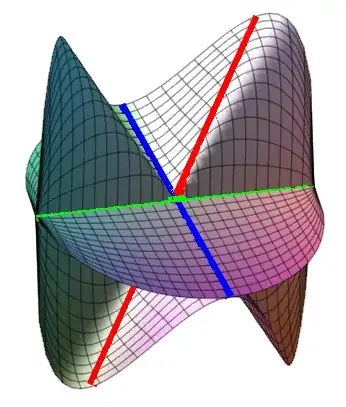I'm studying the continuity of a function and its derivatives checking if the function is continuous, differentiable and calculating some derivatives. The function is
\begin{cases} \dfrac{x^2y}{x^2+y^2}& \text{if }\, (x,y)\neq 0\\ 0& \text{if}\,\, (x,y)=0 \end{cases}
I'm asked to study the continuity in $(0,0)$.
My work:
I started checking the limit of the function for $(x,y) \rightarrow (0,0)$ and considered the trasformation in polar coordinates to get a easier limit:
$$\lim_{\rho\rightarrow 0} \frac{\rho^3\cos^2\theta \sin\theta}{\rho^2}=\lim_{\rho\rightarrow 0} \rho \cos^2\theta \sin\theta=0$$
So I got the continuity.
Then I've been asked to study the value of partial derivatives in $(0,0)$ and the directional derivatives in $(0,0)$ calculated on $y=x$.
I calculated the derivatives:
$f_x=\dfrac{2xy^3}{(x^2+y^2)^2}$,
this is not defined in $(0,0)$ so I considered the limit using polar coordinates again, and I got:
$$\lim_{\rho\rightarrow 0} \frac{2\rho^4 \cos\theta \sin^3\theta}{\rho^4}=2\cos\theta \sin^3\theta$$
Is it right? What can I say now about this limit?
The value of the derivatives in this point is supposed to be $0$ according to the solution given but I'm stuck in this point.
Besides $f_y=\dfrac{x^4-x^2y^2}{(x^2+y^2)^2}$, from which I get to the same kind of problem (again the values is supposed to be $0$)
Finally the directional derivatives: I used the definition and got:
the vector of the direction is $(\sqrt2/2;\sqrt2/2)$ and $f(0,0)=0$ so
$$\lim_{t\rightarrow 0} \frac{f(\frac{\sqrt2}{2}t;\frac{\sqrt2}{2}t)-0}{t}=\lim_{t\rightarrow 0} \frac{\frac{1}{2}t^2\cdot\frac{\sqrt2}{2}t}{\frac{1}{2}t^2+\frac{1}{2}t^2}\cdot\frac{1}{t}=\frac{\frac{\sqrt2}{4}t^3}{t^2}\cdot\frac{1}{t}=\frac{\sqrt2}{4}$$
I have no idea how to finish the discussion of the two first derivatives and so how to check if the whole function is differentiable in the point $(0,0)$
